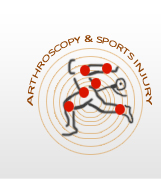| SHOULDER IMPINGEMENT |
 |
|
|
Shoulder impingement is a common condition of pain in the shoulder due to irritation of a fluid sac and the rotator cuff tendons underneath it. It frequently occurs with a 'spur' of bone under the point of the shoulder. The pain may restrict the ability to raise or rotate the arm. Treatment may include rest, injections, physiotherapy and surgery.
|
| |
| Consequences |
- Over time and with advancing age, persistent impingement can lead to tearing of the rotator cuff itself. This will lead to weakness, more pain and a greater likelihood of needing surgery.
- Shoulder movement particularly behind the back and above the head may become restricted
|
| |
| Treatment |
Impingement will most often settle without surgery.
Initial treatment involves |
- Avoid persistent overhead work or any other specific aggravating activity.
- Physiotherapy - directed at and restoring full movement, strengthening the rotator cuff muscles and improving posture. Usually a combination of manual therapy plus exercises.
- Home exercise
- Injections of local anaesthetic with cortisone. This helps to settle the inflammation and break the pain cycle. The effect lasts for 6 to 8 weeks, but may be longer since it helps to eradicate the condition.
|
| |
|
If the condition does not resolve after 3 to 4 months of treatment, Shoulder Arthroscopy surgery may be required. This is called a 'shoulder decompression'.
During the surgery, the bone of the acromion is shaved gently (the 'acromioplasty') and the CA ligament removed to make more room for the rotator cuff tendons to slide while the shoulder moves. If a bone spur is present, it is removed during this process. The inflamed bursa is also partly removed and the whole shoulder is evaluated. |
|
| |
Physiotherapy and Rehabilitation for Shoulder Repair
|
| Phase 1 rehab - regain motion : |
| Pendulum exresises and Elbow/Wrist Exercises started on day 2 with sling in place 24X7 for 3 weeks. Gradual increase in movement after 3 weeks and brace only during sleep and moving out till 6 weeks. Full ROM by 8-12 weeks |
| |
| Phase 2 rehab - regain strength |
|
Physiotherapy plus graduated weights program in some cases. Resistance work with therabands and progressing to a graduated gym programme will start once adequate range of movement is achieved - usually from 6 to 8 weeks post surgery. It will overlap with regaining motion. Swimming (breaststroke) permitted from 10 weeks
|
|
| |
| Phase 3 rehab - Return to work or sport : |
- Sport / activity specific physiotherapy plus ongoing strengthening work.This phase will aim to restore muscle balance, co-ordination and full strength in the shoulder. It may take up to 1 year.
- Timing to full recovery and return to sport or work is variable and depends greatly on individual demands.
- Freestyle swimming is permitted from 3 months.
- Throwing or overhead sports may resume from 3 months, avoiding maximal force until 6 months.
- Contact sports should be avoided for 6 months or until full strength and adequate co-ordination is achieved.
- Non-physical work duties are appropriate from the time of removal of the sling, or before this as comfort allows in some situations.
Return to physical work with the involved arm will require 3 to 6 months depending on demands. |
| |
| |
